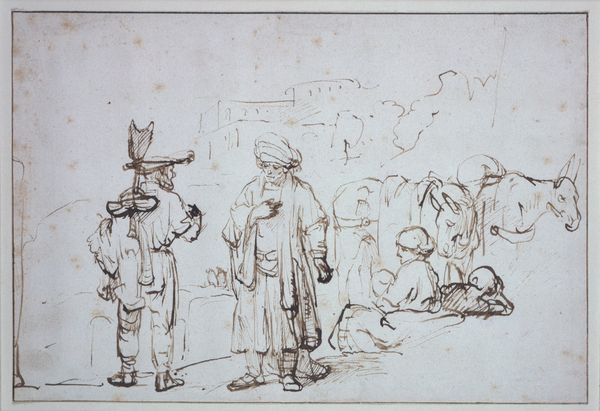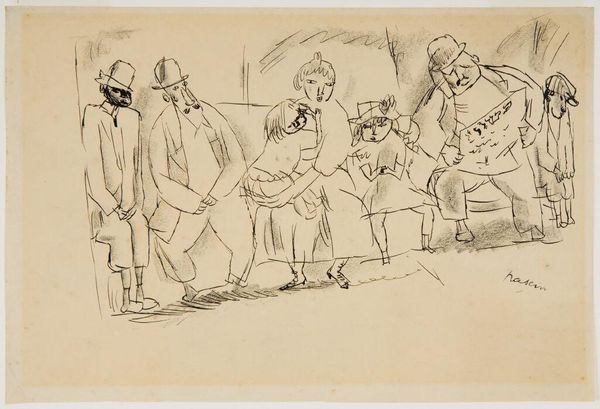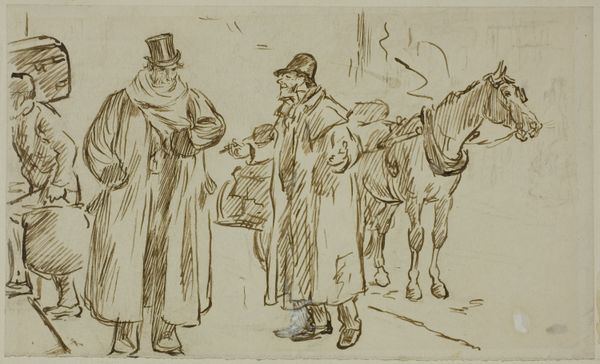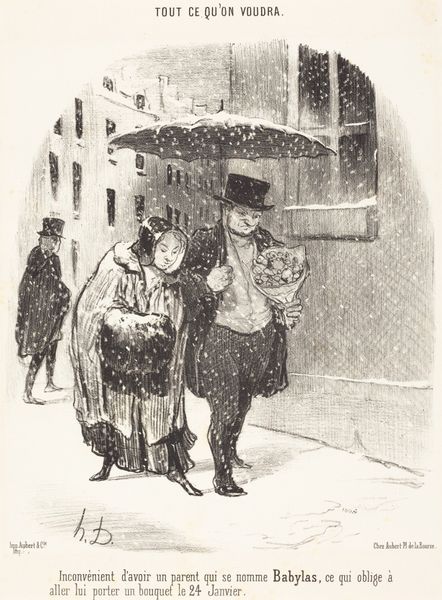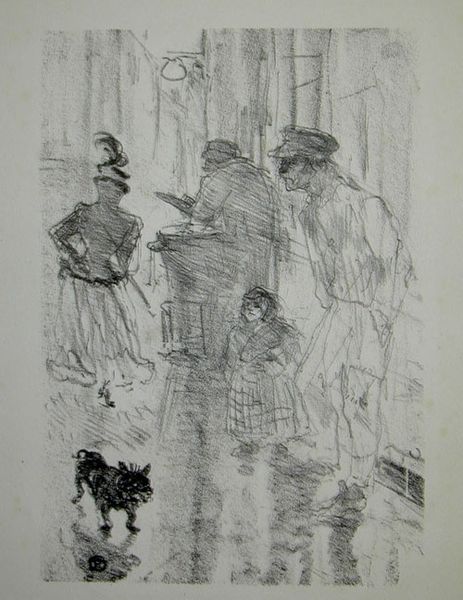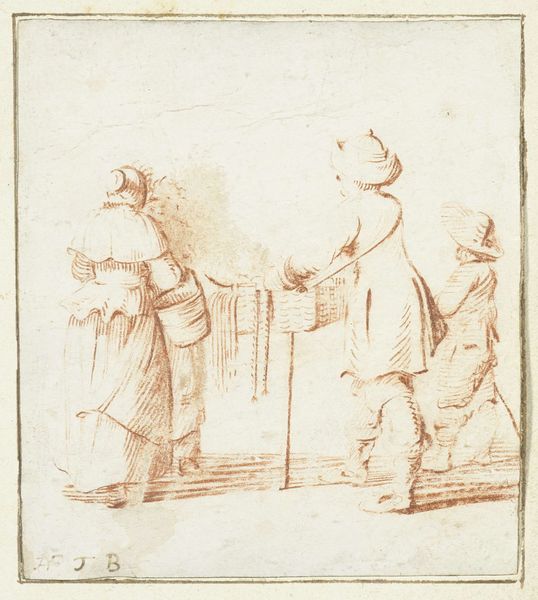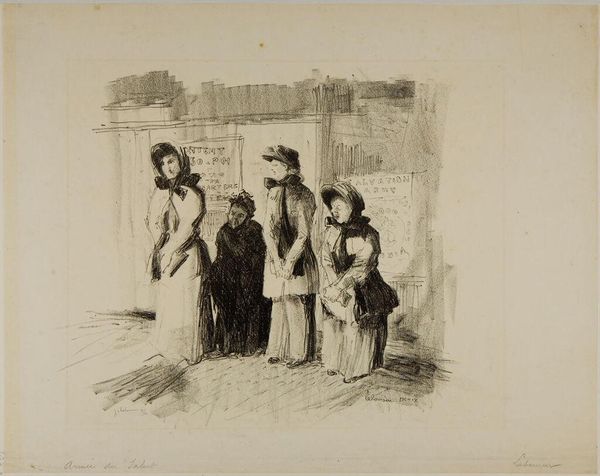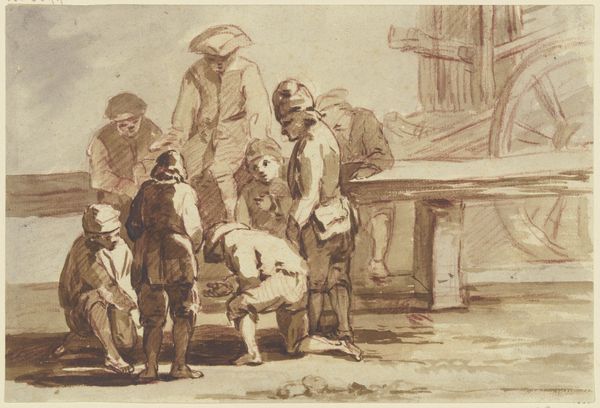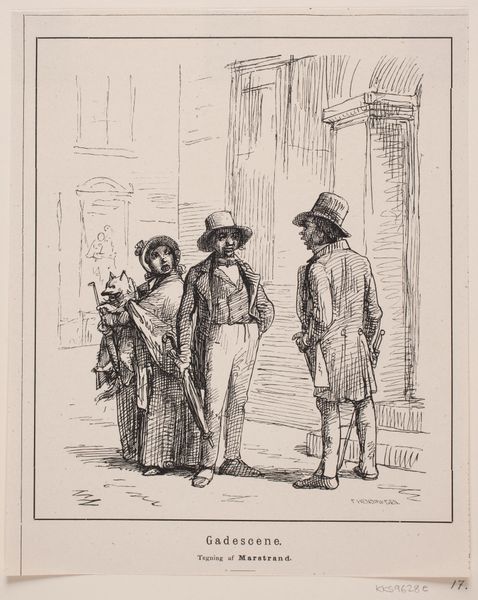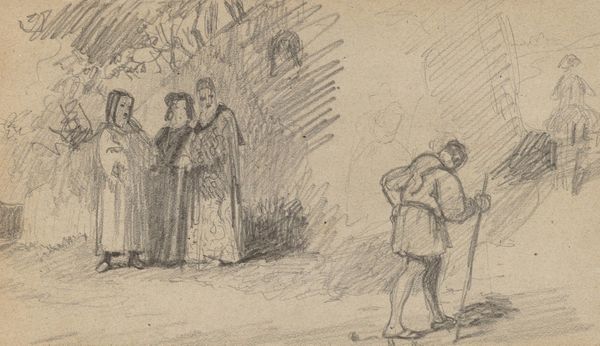
Copyright: Public Domain: Artvee
Editor: This drawing, "Street Scene in Rainy Weather," is from the 1850s by Wilhelm Marstrand. The monochrome palette gives the entire composition a feeling of melancholy. What draws your eye to this drawing? Curator: Primarily, the compositional elements. Note the stark contrast created by the tonal variations of the wash. Marstrand delineates form effectively while the open composition allows negative space to define and separate forms while conveying the expansive scene. Editor: The open composition certainly does create space and suggests that there is more going on outside of what we see. Curator: Exactly. The rhythmic repetition of the umbrellas forms a visual pattern, echoed, although subtly, by the figures themselves. Editor: What about the artist’s choice of rendering? The style is realistic. Is there a tension between Romanticism and Realism? Curator: Indeed. Consider how the artist portrays the urban setting, balancing between a faithful representation and idealized atmosphere through expressive lines, which serves to underscore the emotional depth one might find in Romanticism. How do you find that interplay? Editor: I now appreciate the way he combines objective realism with emotional resonance through this drawing's stylistic qualities. Curator: I concur. Understanding the relationship between form, composition and tonal variation in visual art certainly unlocks greater insight. Editor: I have never thought about that combination. Thank you for making this point clearer.
Comments
No comments
Be the first to comment and join the conversation on the ultimate creative platform.
